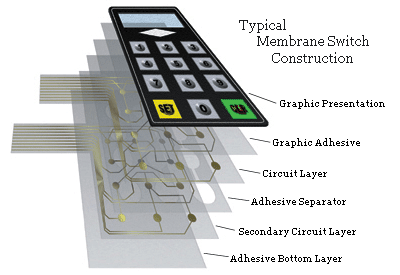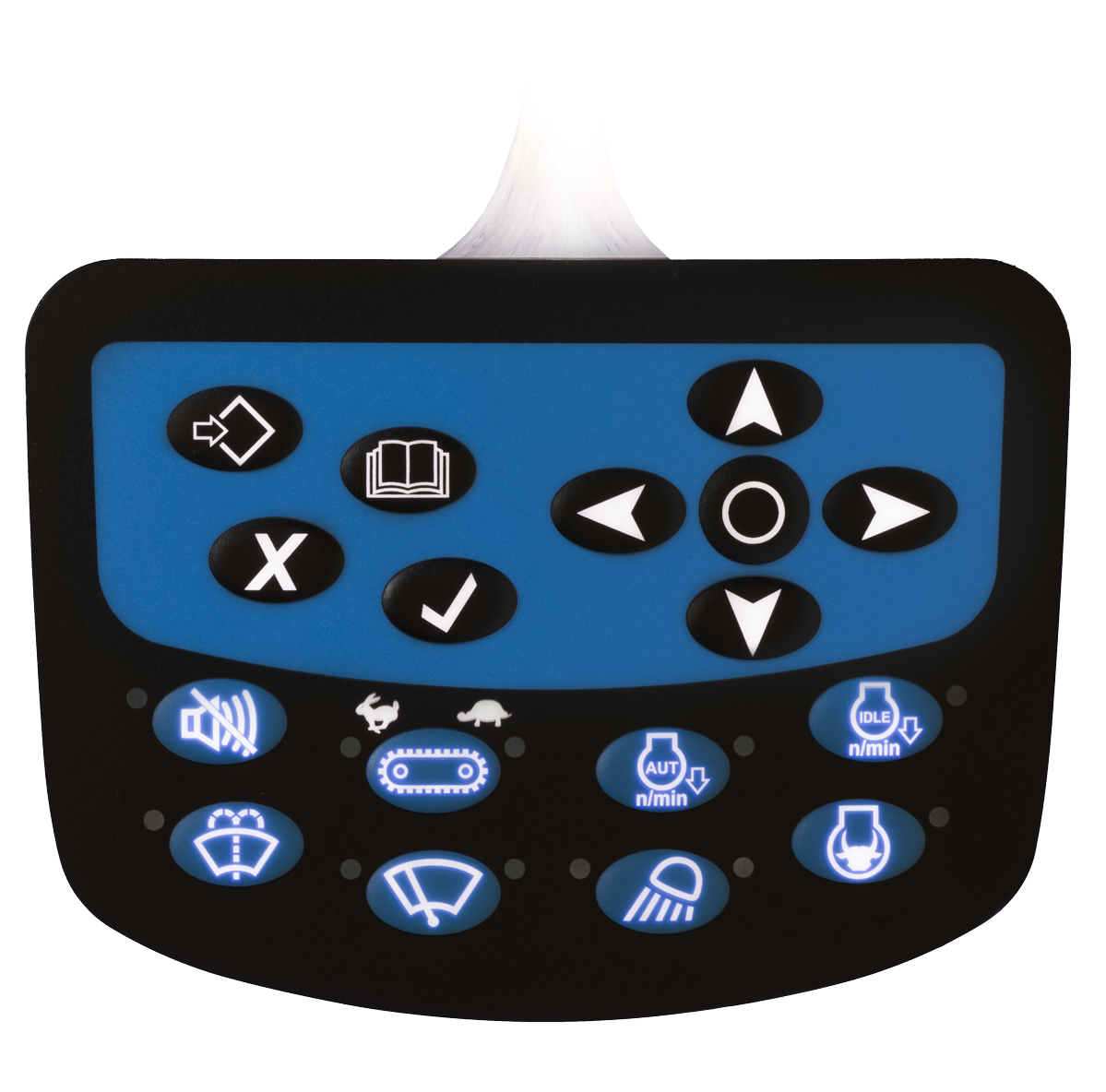Recognizing the Value of Membrane Switches in Interface
Membrane buttons are essential elements in the design of efficient interface, facilitating not just functionality yet likewise improving aesthetic charm and user communication. Their unique attributes, such as resistance to environmental variables and customizable layouts, make them appropriate for a varied range of applications throughout multiple markets. As we discover the different benefits and future patterns linked with Membrane innovation, it comes to be clear that these switches are greater than just parts; they represent a convergence of technology and practicality. The ramifications of this modern technology on user experience are worth taking a look at even more.
What Are Membrane Buttons?

The spacer layer, which has glue properties, permits the splitting up of the circuit layer from the overlay, making sure that the switch remains in a non-activated state till pushed. When pressure is related to the overlay, it presses the spacer layer, connecting the gap and finishing the circuit in the underlying layer. This layout not only reduces the physical room required for conventional mechanical switches however also boosts the longevity of the gadget, as Membrane buttons are typically immune to dirt, moisture, and various other environmental factors.
Generally discovered in applications varying from consumer electronics to clinical devices, Membrane switches are important to contemporary technology, giving a easy to use and efficient user interface that aligns with modern design demands.
Advantages of Membrane Switches
While many button innovations exist, Membrane Switches offer distinctive advantages that make them specifically desirable in numerous applications. Among the key benefits of Membrane buttons is their compact style, which enables space-saving applications in tools where real estate is limited. Their slim profile not only boosts aesthetic appeal however additionally helps with light-weight construction.
One more considerable advantage is their resistance to ecological variables. Membrane switches are normally secured against moisture, dust, and pollutants, making them ideal for use in requiring environments, such as clinical gadgets and industrial equipment. This longevity extends the life-span of the button, decreasing maintenance expenses and improving integrity.
Moreover, Membrane switches can be customized to meet particular design demands, integrating special graphics and shades that boost customer communication. Their responsive responses alternatives can additionally be customized to supply an enjoyable user experience. Additionally, Membrane switches are cost-effective, particularly in high-volume applications, as they can be produced efficiently.
Applications in Numerous Industries

In the customer electronics field, Membrane switches prevail in tools such as microwaves, washing machines, and remotes. Their tactile responses and aesthetic options improve user experience while giving a smooth, contemporary look. Furthermore, automotive suppliers use Membrane switches in control panel controls and infotainment systems, where room is limited, important site and individual engagement is vital.
Furthermore, the commercial industry leverages Membrane switches in control panels for machinery and tools, enabling instinctive operation in commonly harsh atmospheres. Their resistance to chemicals and moisture makes certain durability and integrity in these applications. Overall, the versatility of Membrane Switches contributes substantially to their widespread use, making them crucial in various technological domain names.
Style Factors To Consider for Membrane Switches

When designing Membrane switches, several crucial factors to consider have to be considered to ensure ideal performance and customer experience. First of all, the choice of products is important; picking sturdy, top quality substrates can enhance the switch's longevity and resistance to environmental elements such as moisture and temperature fluctuations.
Second of all, the layout of the visuals overlay must prioritize clarity and ease of usage. Symbols and message should be clear, and the design needs to facilitate user-friendly communication (membrane switches). Furthermore, tactile feedback is essential; including a responsive dome or other mechanisms can boost the customer experience by offering physical verification of activation
Another essential variable is the switch's electrical efficiency. Developers have to make certain that the conductive traces are properly created to decrease resistance and avoid signal disturbance. This involves evaluating the called for actuation force and ensuring compatibility with the digital parts they will user interface with.

Future Trends in Membrane Modern Technology
As innovation proceeds to advancement, Membrane switches are positioned to evolve dramatically, driven by developments in products and manufacturing methods. One arising trend is the consolidation of innovative materials, such as flexible substratums and conductive inks, which boost sturdiness and lower the overall weight of Membrane buttons. These products not only enhance the responsive feedback but likewise enable the layout of buttons that can withstand harsher environmental conditions.
Moreover, the assimilation of touch-sensitive technologies is transforming standard Membrane Switches right into even more interactive user read what he said interfaces. Capacitive touch sensors embedded within Membrane switch panels can supply an extra instinctive and receptive user experience, aligning with the expanding demand for smooth, modern-day layouts in customer electronic devices.
In addition, advancements in printing techniques, such as digital and 3D printing, enable quick prototyping and customization of Membrane buttons. This adaptability allows manufacturers to react more quickly to market demands and customer choices.
Last but not least, sustainability is coming to be a substantial emphasis, with makers checking out eco-friendly materials and processes. As these trends unfold, the future of Membrane modern technology guarantees improved performance, aesthetic appeal, and ecological obligation, solidifying their role in advanced customer interfaces throughout numerous sectors.
Verdict
In conclusion, Membrane Switches represent an essential element in the layout of user interfaces, incorporating functionality with visual adaptability. As developments in modern technology continue, the development of Membrane switches is anticipated to more refine individual interfaces, driving innovation and enhancing use in an increasingly complicated technical landscape.
Membrane switches are important parts in the design of efficient customer interfaces, facilitating not only performance yet also enhancing visual allure and user interaction.Membrane Switches serve as an essential part in various user interfaces, assisting in a smooth communication in between customers and digital devices.While various switch technologies exist, Membrane Switches offer distinctive advantages that make them specifically preferable in numerous applications.Moreover, Membrane buttons can be customized to meet particular style demands, integrating special graphics and shades that boost customer communication.In verdict, Membrane Switches represent an important element in the style of user interfaces, combining performance with visual versatility.